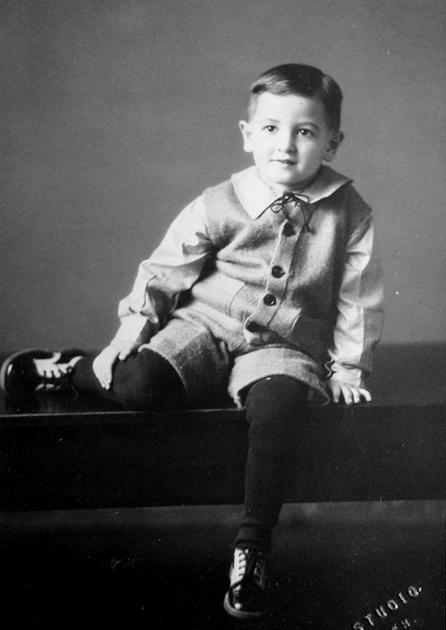
Figure 1.--We think this is an American boy. We can quite make out the photographer's mark. He is wearing a heavy cardigan sweater. It looks to have been taken in the 1920s. Note the Eton collar and string tie. |

|
We do not yet have much information on American sweaters. The most popular knitted garment as in most countries is the sweater. We do not see boys wearing sweaters in the early and mid-19th century. We first see sweaters in the late-19th centuries. American boys have worn many different styles of sweaters. The first ones we note are pull-overs, often with heavy necks, both turtle necks and roll overs. We note cardigans in the early 20th century. The sweater was a major clothing garment for boys by the 1920s. Many boys wore them to school. They were avtually part of the increasing informality in dress. Boys wore sweaters instead of suit jackets. They were a useful garment in that the child could keep his sweater on indoors if it was not warm enough. For parents who wanted a little formality, a V-neck could be purchased which showed a tie. Other boys wire crew necks. Sweaters in bright patterns and colors became very popular. In addition to different neck styles, there were also sleeveless sweaters developed. They were also a popular item for home knitting. The letter-man's sweater was one of a teenagers most prized possessions. Sweaters were at first wool garments. Since World War II, synthetic fibers have been used to produce less-expesive alternatives. There are many other knitted garments, mostly cold weather garments like socking caps, scarves, and mittens. Knitting magazines sometimes offered patterns for coordinated outfits envolving these garments with the sweaters.
We do not yet have much information on American sweaters. We do not see boys wearing sweaters in the early- and mid-19th century. We first see sweaters in the late-19th centuries, but they do not seem very common. A factor here may have been that 19th century photography was usually formal portraits and early sweters seem to have been seen as casual wear. We also notice eaerly football players wearing them. We do begin to see American boys wearing sweaters in large numbers until the 20th century, especially by the 1910s and even more so after World War I in the 1920s. We note a wide variety of styles gradually developing. A factor here is that the popularity of suits, especially for school declined. The sweater became a staple for schoolwear in the 1920s. They were actually part of the increasing informality in dress.
We note several types of sweaters. The type of sweater was in part, but not entirely determined by the type of collar. Pullovers, for example could have a variety of collars. Another maajoir way of differentiating sweaters are the sleeves. The firstr sweaters were long dkeeve arnments, but this evenrtislly changed. There were also sweaters with different sleeves. Eventually sleeveless sweaters developed. We have never seen short-sleeved sweaters.We begin to see these sweaters (early-20th century). Two of the first popular styles were roll collars and cardigans. We notice roll-collars (1910s) We also note cardigans in the early-20th century. We also see sawl collars. These early sweaters tended to be heavy. Gradually we see lighter versions. Another popular early-style was the turtle neck. For parents who wanted a little formality, a V-neck could be purchased which showed a tie. Crew an V-necks are probanly he two most populsar types. Other boys wore crew necks. Sweaters in bright patterns and colors, often called ski sweaters, became very popular. In addition to different neck styles. The letter-man's sweater was one of an Americam teenagers most prized possessions. They were often done as cardigans.
The sweater was a major clothing garment for boys by the 1920s. Many boys wore them to school. Boys wore sweaters instead of suit jackets. They were a useful garment in that the child could keep his sweater on indoors if it was not warm enough. Or if he got hot while playing outdoors, take the sweatwer off. This created a bit of a problem, because boys began losing there sweaters.
Sweaters became a popular item for home knitting.
Sweaters were at first wool garments. Since World War II, synthetic fibers often blended with citton or wool have been used to produce less-expesive alternatives.
Navigate the Boys' Historical Clothing Web Site:
[Return to the Main U.S. cold-weather garment page]
[Return to the Main U.S. country garment page]
[Introduction]
[Activities]
[Biographies]
[Chronology]
[Clothing styles]
[Countries]
[Bibliographies]
[Contributions]
[FAQs]
[Glossary]
[Images]
[Links]
[Registration]
[Tools]
[Boys' Clothing Home]
